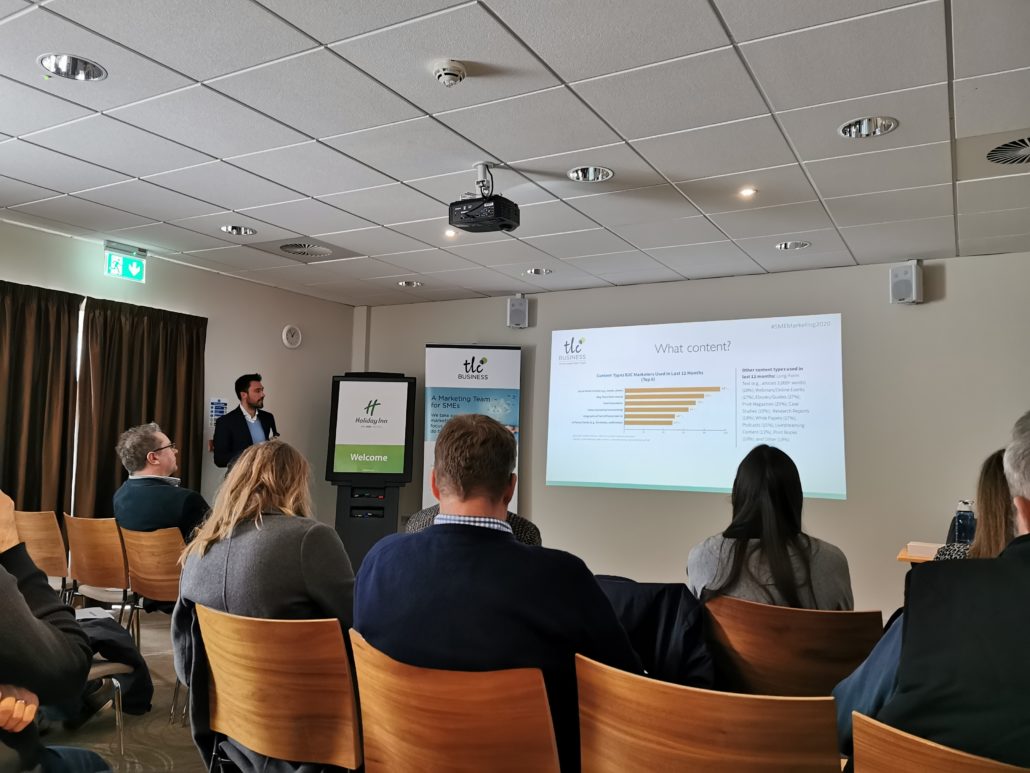What are the most powerful social platforms for SMEs?
Navigating the world of social media can be overwhelming for SMEs. With countless platforms to choose from, it can be challenging deciding which ones are worth investing time and effort in.
In this blog, we’ll look at which platforms could be best for your business. But first, think about your target audience, as that will be key to deciding which platform is right for your brand:
Target your demographic
Understanding who your audience is will guide your social media efforts:
Facebook: Most popular among 25-34 year olds, who are Facebook’s largest UK audience, accounting for 24.7% of users. Facebook users aged 35 to 44 were the platform’s 2nd largest demographic, followed by those aged 18-24.
Instagram: A favourite among younger audiences, particularly 25-34 years old (making up 29.7% of UK users), closely followed by 18-24 year olds.
X (Formerly Twitter): Appeals to a diverse age range, but nearly 40% of X’s UK users are aged 25-34 years.
LinkedIn: Ideal for professional and B2B audiences, particularly those aged 25-34 (accounting for 47.1% of UK users).
YouTube: In the UK, YouTube is most popular amongst 25-44 year olds, accounting for 44% of its users.
TikTok: Dominated by younger users, 76% of users in the UK were aged 15-24.
Pinterest: Favoured by young adults aged 18-24 (39% of UK users). Predominantly used by women, who account for 70% of Pinterest’s users.

What type of content will you be sharing?
Different platforms excel with different types of content. Here’s where to share:
Visual content: Instagram, Pinterest, TikTok.
Text and links: X, LinkedIn.
Videos: YouTube, TikTok, Instagram.
Consider your brand and industry
Think about which platforms align best with your industry and brand.
For example, LinkedIn is ideal for B2B and professional services, while Instagram and Pinterest are great for B2C, lifestyle and retail brands.
Next up, we’ll be delving into the best platforms for B2B and B2C businesses:
Best platforms for B2B
– Ideal for: Professional networking with 1bn users
– Strengths: Ideal for lead generation, industry networking, and content sharing
– Audience: Professionals, decision-makers, and businesses
- X
– Ideal for: Real-time news and updates
– Strengths: Great for sharing industry news, engaging in conversations, and reaching influencers
– Audience: Broad but often includes professionals and industry leaders across its 600m worldwide users
Suitable for B2B
– Ideal for: Social networking, Facebook is the largest social media platform with 2.9bn active monthly users
– Strengths: Offers targeted advertising, community building through groups, and content sharing
– Audience: Broad, including some professionals and business pages
- YouTube
– Ideal for: Video sharing amongst 2.49bn users worldwide.
– Strengths: Useful for product demos, webinars, educational content, and brand storytelling
– Audience: Wide, including business professionals seeking informative content
Less Suitable for B2B but can be used strategically
– Ideal for: Photo and video sharing with 2.4bn users worldwide
– Strengths: Effective for brand awareness, showcasing company culture, and visual storytelling
– Audience: Primarily younger demographics (25-34), but businesses can reach professionals with the right content
– Ideal for: Visual discovery and bookmarking with 518m global users
– Strengths: Suitable for industries like design, fashion, and lifestyle to share visual content
– Audience: Primarily women, with business and creative professionals
- TikTok
– Ideal for: Short-form video content with 1.58bn users globally
– Strengths: Can be used for creative and engaging content, brand awareness, and reaching a younger audience
– Audience: Mostly Gen Z, but B2B use is emerging with innovative content
Top Tips for B2B Social Media Strategy
Follow our top B2B tips to help drive success across your chosen social media platforms:
- LinkedIn: Focus on sharing industry insights, company news, case studies, and whitepapers.
- X: Engage in industry conversations, share news, and use hashtags to reach a wider audience.
- Facebook: Create a business page, run targeted ads, and engage with followers through groups.
- YouTube: Produce educational videos, product demos, and thought leadership content.
- Instagram: Showcase company culture, behind-the-scenes content, and visually appealing product features.
- Pinterest: Share infographics, design inspiration, and visual content related to your industry.
- TikTok: Experiment with creative and engaging content to reach younger professionals.

Best Platforms for B2C Businesses
– Ideal for: Social networking
– Strengths: Offers targeted advertising, community building through groups, and versatile content sharing (text, images, videos
– Audience: Broad, with strong engagement across various age groups, especially Millennials and Gen Z
– Ideal for: Photo and video sharing
– Strengths: Excellent for visual storytelling, brand awareness, and influencer collaborations
– Audience: Primarily Gen Z and Millennials
- TikTok
– Ideal for: Short-form video content
– Strengths: Ideal for creative and engaging content, viral marketing, and reaching a younger audience
– Audience: Mostly Gen Z
- YouTube
– Ideal for: Video sharing
– Strengths: Useful for product demos, tutorials, brand storytelling, and reaching a wide audience
– Audience: Wide, including younger viewers and adults seeking informative and entertainment content, especially Millennials and Gen Z
– Ideal for: Visual discovery and bookmarking
– Strengths: Suitable for lifestyle, fashion, DIY, and creative industries
– Audience: Primarily women, Millennials and Gen Z, looking for inspiration and ideas
Moderately Suitable for B2C
- X
– Ideal for: Real-time news and updates
– Strengths: Great for sharing quick updates, customer service, and engaging in trending conversations
– Audience: Broad, but often includes professionals and news-seekers, especially Millennials and Gen Z
- Snapchat
– Ideal for: Multimedia messaging, there are 414m Snapchat users worldwide
– Strengths: Effective for engaging younger audiences with ephemeral content and behind-the-scenes looks
– Audience: Mostly younger demographics, mainly Gen Z

Top Tips for B2C Social Media Strategy
We’ve put together some top tips for B2C businesses to include in their social media strategy across different platforms:
- Facebook: Create engaging posts, use targeted ads, and build communities through groups.
- Instagram: Share high-quality visuals, use Stories and Reels, and collaborate with influencers.
- TikTok: Produce creative and engaging short videos, participate in trends, and use hashtags.
- YouTube: Create tutorials, product reviews, and brand stories to engage and inform your audience.
- Pinterest: Pin visually appealing content, use rich pins, and create boards around popular themes in your industry.
- X: Share quick updates, news, and engage with customers in real-time.
- Snapchat: Use Stories and Filters to create engaging and exclusive content for younger audiences.
What are your competitors doing?
A good way to check you are investing in the right platforms is to look at your competitors and analyse which platforms they are using and getting good engagement on. This will be a good indicator of where you can receive similar success.
Ultimately, the key is to understand where your target audience spends their time and tailor your content to each platform’s strengths. Don’t forget, our friendly team is always happy to offer advice and run your social media for you.
For a free virtual marketing ideas session with marketing experts, call us on 01962 600 147 or email info@tlc-business.co.uk






